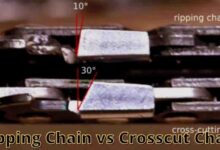You could be a beginner at wood carving and looking for the ideal woods to curve. Or you could have a hobby for wood carving. You could also be a professional who works with wood.
Regardless of who you are, we’re here to elaborate the entire concept of wood carving on Limewood.
So, what actually is Lime wood for Carving?
In short, you could say that Lime wood is best for wood carving. Especially if you are a beginner. The reasons for this are the high workability and high junka rating of lime wood. Lime wood also appears good and produces no toxins. We’ll also explain the pros and cons of using lime wood.
So stick with us till the end. We’re certain that this will help you in the long run.
Contents
What is Lime Wood?
Limewood is ideal for complex carving wood. It is really simple to handle in terms of equipment and supplies.
Most woods are unsuitable for carving since they crack easily. Particularly when carving corners most woods don’t provide a crisp and finished look. Your final product will be dull because of the cracks and imperfect corners.
Limewood is hardwood, yet it’s soft. And it retains details well. If you’re a hand carver, that’s the wood you must use.
It’s ideal for delicate crafts, and because of its malleability and affordability, beginners won’t have to worry about destroying blanks while carving.
As Lime wood is incredibly soft and light, you won’t feel much pressure. Even while carving a large block of wood by hand. It’s also easier to stain, polish, nail, cut, and twist lime wood.
Difference Between Lime Wood and Basswood
You’ll often find that people are suggesting basswood whereas you’re looking for lime wood. There is a reason for this. These two wood types belong in the same genus.
The major difference is their location of origin. Lime wood is of European origin. It is a hybrid of Tilia platyphyllos and Tilia cordata species.
On the other hand, Basswood is of American origin. These are found primarily in North America. It originates from the Talia Americana Plant.
In Europe, species of the Tilia genus are widely known as Lime or Linden. Whereas in the United States, the wood is known as Basswood. They are not linked to the Citrus genus’ lime fruit.
The European lime has a strong strength-to-weight ratio and is heavier and tougher than the American version.
Other than that, a major difference is that Lime wood is stronger and more durable than American Basswood.
Lime Wood Features
Lime wood is best for wood carving because it has the best workability. Besides, it has a nice appearance and it’s also non-toxic. Other than these Lime wood has a higher Junka rating.
Let’s have a look at these features in detail.
High Workability
Lime wood it’s ideal for complex wood carvings. This high workability is because of the compact grain structure of lime wood. This makes it significantly less prone to crack while working.
You will find Lime wood is the simplest to work with. It is very lightweight and soft. Despite being soft in nature, its strength equals to oak wood. Lime wood carvings are far more durable than other softwood carvings.
Lime wood is indeed the finest wood for hand carving for its high workability. It has a polished look when stained and sanded.
Looks Good
The pure white cream tint is consistent throughout the wood. Over time, this soft cream tint will become yellow. Which becomes a uniform light yellow color that darkens with time.
It’s also delicate yet lightweight, with a naturally beautiful shine. Lime wood is perfect for deep chip carving because of its exceptional carving qualities.
In woodcarving, the most important aspects are color and looks. Lime wood has a crisp, even grain which creates stunning sculptures.
Non-Toxic
Lime wood is non-toxic, unscented, and doesn’t harm foods. Lime wood may be used to craft toys for children and kitchenware with no trouble.
Aside from the typical health concerns involved with any form of wood dust, Lime wood has not been linked to any other health problems.
High Junka Rating
Lime wood has a Janka score of 700. The Janka score shows how much force a wood can withstand. It also shows how long it will last.
It’s a good score. But it does suggest that lime wood isn’t meant for heavy-duty tasks. Such as tasks that demand a lot of wear. Or that you need to dig deep.
Advantages and Disadvantages of Using Lime Wood
Lime wood is one of the best woods for carving. There are a lot of advantages of Lime wood for wood carving. Despite the fact, you’ll face some problems working with Lime Wood. As there are a few disadvantages too.
Advantages:
- Woods that are environmentally friendly are available.
- Easily accessible.
- It’s simple to curve because it’s pliable.
- Its excellent quality enables to bring exquisite details in carving.
- Extremely strong.
- Simple to complete.
Disadvantages:
- It’s much less resistant than the majority of the hardwoods on the marketplace.
- Bigger wood carving tasks are not recommended.
- Considering the quality it provides, Lime wood is cheaper. But it’s more expensive than most other wood varieties.
Tools Required for Beginner Level Wood Carving
There are a variety of tools that can be used for carving wood. But if you’re just starting out wood carving our suggestion would be to keep the following tools in your inventory.
Chip Carving Knife
A chip carving knife is usually the very first equipment a wood carving uses. Also known as a chipping knife.
Its main applications are shaving and chip carving. This knife features a blade that would be about 1 1/2″ in length. It comes with a handle that is meant to rest in the hand conveniently.
It is composed of high-carbon steel, similar to gouges. This knife also keeps an edge for a long period.
Buying the right Chip Carving Knife is important for precise carving results. Our recommended Chip Carving Knives are:
BeaverCraft Chip Carving Knife Check Price! FLEXCUT KN115 Carving Knives Check Price! BeaverCraft S15 Whittling Wood Carving Kit Check Price!
These recommendations will surely help you get a good start in wood carving.
U-Gouge
Wood carving U-gouges are the powerhouses. A U-gouge generally has a specific degree of curvature for cutting edge, sweep, etc.
You’ll need to use this tool quite a lot while wood carving. This tool helps to provide precision and detail in the woodwork.
There are a few options to pick from in the market. But our recommendations for U-Gauge are:
Flexcut Carving Tools Check Price! FLEXCUT MT27 Micro Deep U-Gouge Check Price! Excel 2-Piece U Gouge Check Price!
These are the best ones out there. If you’re starting out you should start with these.
Bent and Spoon Gouges
These are some special tools. These tools are used in places where straight gouges cannot reach.
Here we look at a few types of bent and spoon gouges.
Bent Gouge
Bent gouge as the name suggests, it’s bent in shape. In this type of gouge the entire length of the shaft if curved
Spoon Gouge
This gouge is also bent. But the entire shaft is not bent for this one. The shaft is severely curved in a spoon form for the last 1 1/2″.
Back-bent gouge
The bent in this gouge is in reverse. The cutting edge of a spoon gouge has been inverted so that it is convex rather than concave.
You should get the best ones out there for yourself. So here are our recommendations.
Hirsch #5 Back Bent Gouge – 14mm Check Price! Wood Carving Bent Gouge Check Price! Hirsch #5 Back Bent Gouge – 10mm Check Price!
For a more precise result do consider these products for your carving.
How to Curve a Lime Wood?
You can call wood carving a hobby, passion, or sometimes necessity for some. No matter what the case, you should know how to carve properly. Otherwise, you’ll be very disappointed seeing the end product.
Wood carving becomes a skill upon practicing over and over again. In this regard, you can say ‘practice makes perfect.’ Even if you are not naturally gifted in wood carving you can master the skill upon practice.
Let’s look at the basics of how to curve Lime wood.
Outline the Shape
At first you need to outline the shape you want to curve on the Lime Wood.
This is the most crucial step which every woodworker ought to follow. Sketching is essential for gaining an understanding of what you’re trying to produce and how you’re planning to go there.
If your drawing has adequate details, you may quickly carve your sculpture by finishing every aspect one at a time.
Draw a simple sketching with its borders right on the lime wood surface sketch if you’re developing a simple object to carve. For small wood carving tasks, this approach works well.
Chip the Shape
Once you’ve finished outlining the wood then you can start chipping away.
Slowly start chipping the wood according to your sketch. Use chipping tools in order to chip away wood.
You should chip the wood in a particular direction for a particular design. Let’s say you are trying to carve a bird.
Then the head of the bird should be chipped in one particular direction. Again the tail should be chipped in a particular direction.
You can effortlessly carve the project without constantly gazing at the drawing if you separate components early on. You could easily mess up and produce uneven woodcuts.
Lime wood is perfect for beginners because of its high workability. With the help of a sharp chipping knife, you can add your desired details.
Sand and Finish the Wood
Lime wood is a kind of wood with all of the desirable qualities that woodworkers desire. Sanding lime wood is simple since it simply provides a smooth texture.
Clean the dust with a brush or a vacuum cleaner when you’ve finished sculpting. After that, sand by hand.
Alternative Woods for Carving
Although Lime wood is excellent for wood carving, there are some alternatives that you could try.
Oak Wood
Large wood carving projects benefit from oakwood. Oak wood stains well. Besides, the toughness is outstanding. If you don’t want to utilize lime wood due to its brittleness, oak wood is the ideal alternative.
It is quite durable, and with careful care, you may enjoy your lovely Oakwood carvings for a very long time.
Aspen Wood
Aspen wood is a high-quality wood that may be used for a variety of wood carving projects. It’s a hardy hardwood with a lot of strength.
Workability is great, and it’s simple to use. It has the same crack resistance as lime wood. This makes carving edges and creating a smooth surface a relatively simple task.
Aspen wood is used to light up fire from time to time. As Aspen wood could be good firewood.
FAQs
How heavy is Lime wood?
Lime wood belongs in the medium-heavy category. The lime wood is delicate and normally has a density of 530 kg/m3. It has a consistent density and isn’t very stretchy.
What is the time required to carve wood for beginners?
For beginners, it would take about 1-3 hours to complete a small wooden sculpture. The sculpture is roughly the size of a palm. And about 1-2 weeks to complete a bigger wooden sculpture. Which could be the size of a person.
How long should you dry Lime wood before carving?
You should dry the Lime wood for at least 6-12 weeks before using it. It is a suitable amount of time. However, this time could vary by the influence of humidity and temperature.
Conclusion
Hope you are all crystal clear on lime wood for carving. A bonus tip for you, if you’re just starting out, is to always keep a stockpile of sandpaper.
Thank you for being with us till the end. Catch some other time.







